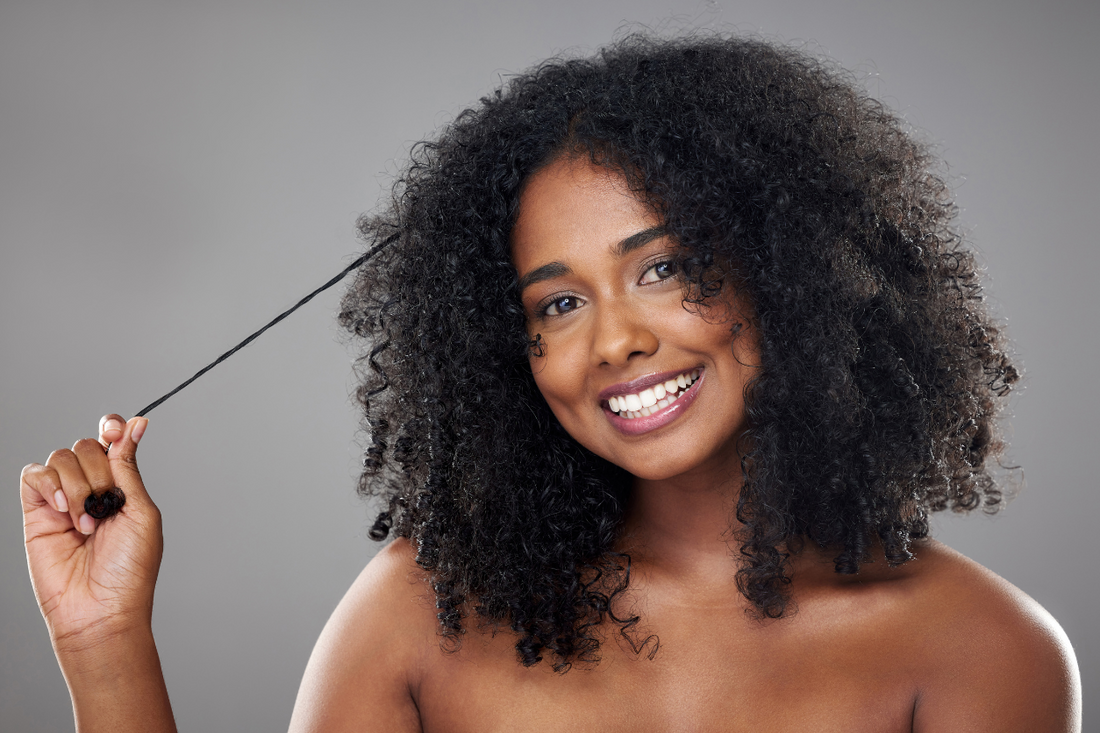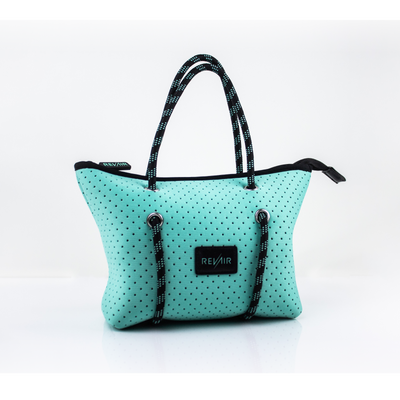
The Quick Reference Guide to Low Porosity Hair Care

Care for your hair by caring for your hair type.
You may have heard this natural hair mantra mentioned a few times by beauty bloggers, stylists, and product experts, especially if you've been searching for the best curly hair routine. Who exactly defines "good hair care" anyway? The best routine is indeed the one suited to your hair's distinct composition. Considering our golden rule of catering to your hair type, it's safe to say that we have the power to create the best natural hair care routine for our curls. Let's start by defining how our hair reacts to products. If you have low porosity hair and have been determined to find a reliable natural hair care routine, this is the simple, easy guide you've been waiting for.
We love this hair type and can't wait to bring out the radiance within! Discover how to empower your low porosity hair care routine with RevAir.
What Does Hair Porosity Mean and How Do I Know I Have Low Porosity Hair?
Porosity is a term that's often used loosely in the natural hair community. But what exactly does hair porosity refer to and how does this composition help us structure our hair care routines? Well, porosity refers to how your hair absorbs and retains moisture. This can tell us a lot about sensitivities, how your hair might change seasonally, and most importantly what products to use and in what rotation. Think of porosity as a nutrition guide for your curls. When we fuel our hair properly, our healthy locks will thank us for looking their best.
Low porosity hair is defined as hair that has a difficult time absorbing moisture. We tend to think of curly hair as dense and prone to dryness. Low porosity curls tend to be looser, wavy, or S-shaped. The curls are distinct with a tight, flat cuticle that prevents moisture from entering and exiting the hair. This is why low porosity hair can often look limp or flat. As HeyCurls puts it, "think of your hair strand like a shingled roof. Usually, all the layers of shingling tightly overlap to avoid flooding. When rain hits the roof, the water simply slides off without absorbing through the roof. Low porosity hair is identical. The cuticle layer is bound tightly like those roof shingles, and when water hits, it cannot easily penetrate through the cuticle."
The highlight of low porosity hair is its ability to hold onto moisture more effectively than other hair types. The challenge is getting that moisture in.
Characteristics of Low Porosity Hair
If you're looking for a quick guide on how to tell if you have low porosity hair, we've put together a few key traits to examine. Foremost, take a look at how your curls move. Do they spring back easily or stay rigid? Do you often suffer from dull or flat hair without a lot of body? Low porosity hair typically lacks elasticity. Brittle, delicate, and fine strands can indicate your hair may not be absorbing the product as efficiently as we'd like.
Next, think about how your hair feels on wash days. Do you often find a lot of product residue or does the product sit on top of your hair rather than sinking in? Notice the way your hair reacts to water. Low porosity hair often stays wet for hours but has trouble becoming fully saturated. Lastly, you may notice your hair is especially tangle-prone. Split ends are a common hallmark of low porosity hair that isn't getting enough moisture.
If you're still unsure of your hair's porosity type, try the strand test! Simply place a strand of hair in a glass of water and observe. If the strand floats to the top, you're working with low porosity hair.
The Best Products for Low Porosity Hair
Caring for low porosity hair takes time, patience, and consistency. With a few simple product recommendations, you'll be ready to start your natural hair care journey. The first thing to prioritize is finding the right shampoo. Be sure to steer clear of any formula that contains drying agents such as sulfates, alcohol, parabens, or harsh chemical additives. Use only lightweight, water-based products. If you've been considering transitioning to an all-natural hair care routine, this is the perfect opportunity to stock up on nourishing shampoos and other products for low porosity hair.
When picking out a conditioner for low porosity hair, it's important to focus on hydrating ingredients. Your hair already has a lot of natural shine! That means you don't necessarily need the extra oil found in many curly hair conditioners. You can also opt out of a high-protein formula. Protein is both heavy and drying at the molecular level, which can be a challenge for delicate, finer hair types. Instead, look for formulas built to hydrate and define your curls' shape. Key ingredients include salts, betaine, alpha-hydroxy acid, and glycerin. These deep moisturizers penetrate the cuticle effectively to seal in hydration.
One question that often comes up when discussing low porosity that is also curly is whether or not to use hair oils such as coconut oil. Coconut oil is highly beneficial in providing natural lubrication and sealing the ends of the cuticle. However, use this product sparingly as coconut oil can leave behind a greasy residue in low porosity hair. Start with a dime-sized amount and work your way up from the ends to mid-length, avoiding direct contact with the roots. If you find that coconut oil is too dense for your hair, try a lighter oil such as sunflower, grapeseed, or even rose oil.
The last item on your low porosity hair care list should be a UV-protecting spray. Due to the tendency of low porosity hair to reject moisture, minimizing heat exposure is key to maintaining healthy curls. Always protect your hair from the sun, even during the winter months when it's easy to let good habits slip.

Low Porosity Hair Tips and Tricks
One of the best ways you can foster healthy low porosity hair is by minimizing heat exposure. Of course, due to how long it takes for low porosity hair to dry, it's easy to overuse your blow dryer and exacerbate split ends and hair damage. Make the switch to a low-heat device instead! Our RevAir uses reverse air technology to gently dry, stretch, and style. Best of all, you can dry your hair in a fraction of the time you're used to. Interested in learning more tips for low porosity hair? Check out How to Use Your RevAir and see how others are styling their curls with a lower heat, lower stress method.
Other ways you can protect your low porosity hair from environmental stressors include being aware of seasonal changes and preparing accordingly. We've discussed the need for UV protection during the summer months, but consider what activities you usually enjoy. If swimming is on the list, remember that your hair will stay wet long after you're enjoying the water. Be extra gentle as wet hair is prone to breakage. This goes for wash days too. Always detangle with caution and avoid putting your hair into tight styles like braids before it's fully dry.
Additionally, if you struggle with product build-up, try adding apple cider vinegar to your routine once or twice a week as a cleanser. This all-natural clarifying product works wonders for the scalp and promotes overall hair health.
Many find it helpful to apply a "pre-poo" treatment before washing their hair. A pre-poo is essentially a moisture mask that you can apply before showering to give your hair a hydration lift. A pre-poo treatment does not need to be elaborate. A simple DIY mixture of banana and olive oil is one of our favorite home remedies to revitalize dry curls.
Protective styles are your hair's best friend when it comes to keeping your curls healthy. If you want to give your locks a break without compromising on your hair styling, a protective style is the solution for you. Locs, braids, twists. and more work well with low porosity hair to protect your natural strands from damage while they continue to grow out.
Understanding your hair's composition is all about utilizing the right products and techniques to keep you glowing. Low porosity hair is unique, though sometimes challenging, hair type to work with due to its tendency to reject moisture. A true paradox, this hair type is equally good at retaining moisture which is what gives low porosity hair its characteristic shine and silkiness. Caring for low porosity hair is often a balancing act between these two dynamics. With time and practice, your hair care routine will become second nature.
If you'd like to learn more about caring for low porosity hair, reach out to the team at RevAir. No matter your hair goals, no matter where you're at in your natural hair journey, we're here to support you every step of the way. Let's start loving our curls even more with the right care techniques for every hair type.















